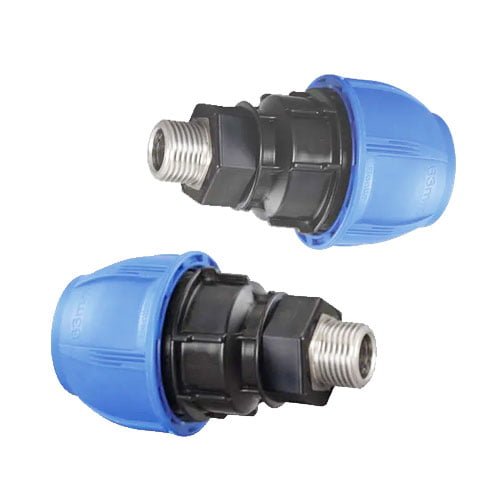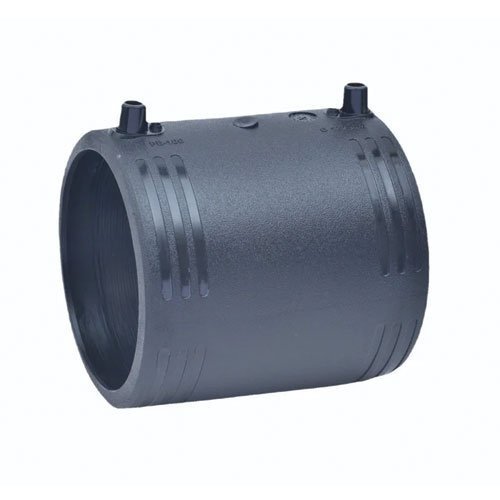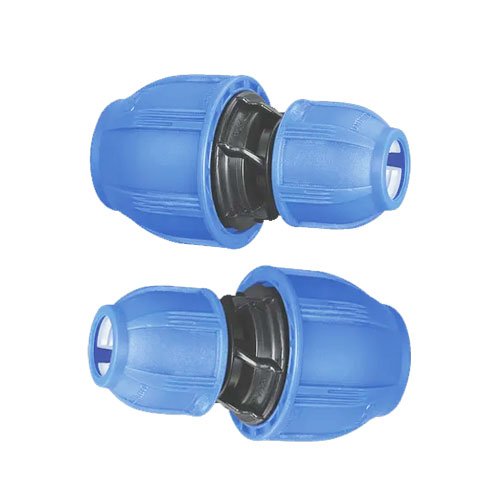In the realm of modern infrastructure and piping systems, innovation plays a pivotal role in ensuring efficiency, durability, and sustainability. High-Density Polyethylene (HDPE) pipes have emerged as a popular choice for various applications due to their exceptional properties, including flexibility, corrosion resistance, and longevity. Among the many advancements in joining methods for HDPE pipes, Electrofusion Couplers stand out as a reliable and efficient solution. In this article, we delve into the intricacies of HDPE Electrofusion Couplers, exploring their benefits and applications in the realm of piping systems.
Understanding HDPE Electrofusion Couplers
HDPE Electrofusion Couplers are specialized fittings designed to join HDPE pipes together using an electrofusion process. Unlike traditional methods such as butt fusion or mechanical coupling, electrofusion involves the use of heat generated by passing an electrical current through a precisely controlled resistor coil embedded within the fitting. This heat melts the HDPE material, allowing for a strong, homogeneous fusion between the pipes and the coupler.
Advantages of HDPE Electrofusion Couplers
- 1. Seamless Fusion:
One of the primary advantages of HDPE Electrofusion Couplers is the seamless fusion they provide. The electrofusion process ensures a uniform bond between the pipe and the fitting, eliminating potential weak points or leakage paths commonly associated with traditional joining methods. - 2. Enhanced Strength:
HDPE Electrofusion Couplers offer exceptional joint strength, capable of withstanding high-pressure applications without compromising integrity. The fused connection distributes stress evenly across the joint, minimizing the risk of failures or ruptures, even in demanding environments. - 3. Versatility:
These couplers are highly versatile and compatible with a wide range of pipe sizes and specifications. Whether used in municipal water distribution networks, industrial applications, or agricultural systems, HDPE Electrofusion Couplers provide a reliable solution for joining pipes of varying diameters and materials. - 4. Corrosion Resistance:
HDPE pipes are inherently resistant to corrosion, making them an ideal choice for installations in aggressive soil conditions or corrosive environments. The seamless fusion provided by Electrofusion Couplers further enhances this resistance, ensuring long-term performance and durability. - 5. Time and Cost Savings:
The efficiency of the electrofusion process translates into significant time and cost savings during installation. With no need for additional equipment or complex procedures, HDPE Electrofusion Couplers enable rapid assembly of piping systems, reducing labor costs and project timelines. - 6. Leak-Free Performance:
The fusion process creates a leak-free seal that remains robust over the lifetime of the piping system. By eliminating potential leak points, HDPE Electrofusion Couplers contribute to overall system reliability and reduce the need for maintenance and repairs.
Applications of HDPE Electrofusion Couplers
The versatility and reliability of HDPE Electrofusion Couplers make them suitable for various applications, including:
- Water distribution and transmission networks
- Gas distribution systems
- Industrial piping installations
- Mining operations
- Agricultural irrigation systems
- Landfill leachate collection
HDPE Electrofusion Couplers represent a significant advancement in joining technology for HDPE piping systems. Their seamless fusion, enhanced strength, and versatility make them a preferred choice for a wide range of applications across different industries. By offering superior performance, durability, and efficiency, HDPE Electrofusion Couplers contribute to the advancement of modern infrastructure while ensuring long-term reliability and sustainability. As the demand for robust and efficient piping solutions continues to grow, the role of Electrofusion Couplers in shaping the future of infrastructure remains paramount.
HDPE Electrofusion Coupling Standard Dimensions
HDPE Electrofusion Couplings come in various standard dimensions to accommodate different pipe sizes and applications. These dimensions are typically standardized by industry organizations such as ASTM International or ISO (International Organization for Standardization).
Here are some common standard dimensions for HDPE Electrofusion Couplings:
- Pipe Size Compatibility: HDPE Electrofusion Couplings are designed to accommodate specific pipe sizes. Common pipe sizes range from small diameters (e.g., 20mm) to larger diameters (e.g., 630mm or more). The dimensions of the couplings are matched to the corresponding pipe size to ensure a proper fit and seal.
- Length: The length of the coupling can vary based on the manufacturer and the specific application requirements. Standard lengths are typically designed to provide sufficient fusion area between the coupling and the pipes being joined. Lengths may range from a few inches to several feet, depending on the diameter of the pipes and the desired fusion area.
- Wall Thickness: The wall thickness of HDPE Electrofusion Couplings is designed to provide structural integrity and withstand the operating pressures of the piping system. The thickness may vary depending on the size of the coupling and the pressure rating required for the application. Thicker walls are often used for larger diameter couplings or higher pressure applications.
- Fusion Zone: The fusion zone of the coupling refers to the area where the electrofusion process takes place, bonding the coupling to the pipes. This zone is carefully engineered to ensure a strong and reliable fusion joint. The dimensions of the fusion zone may vary depending on factors such as pipe size, material thickness, and fusion parameters.
- End Configuration: HDPE Electrofusion Couplings typically feature a standardized end configuration to facilitate the fusion process and ensure compatibility with electrofusion welding equipment. Common end configurations include plain ends or serrated ends, which help to enhance the fusion process and create a secure bond between the coupling and the pipes.
- Pressure Rating: HDPE Electrofusion Couplings are designed to meet specific pressure ratings based on industry standards and regulatory requirements. The pressure rating of the coupling is determined by factors such as material properties, design parameters, and manufacturing processes. Common pressure ratings for HDPE Electrofusion Couplings include PN10, PN16, PN20, PN25, and PN32, among others.
It’s important to note that the dimensions and specifications of HDPE Electrofusion Couplings may vary between manufacturers and regions. Therefore, it’s essential to refer to the specific product datasheets, technical specifications, or industry standards applicable to your project to ensure proper selection and installation of the couplings.







